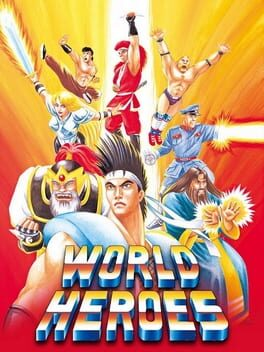Popular Games
Contact
Marvel vs. Capcom 2: New Age of Heroes
Fallout: New Vegas
The Legend of Zelda: Majora's Mask
True Crime: New York City
The Legend of Zelda: Skyward Sword
Phoenix Wright: Ace Attorney Trilogy
New Super Mario Bros. U
Silent Hill: The Short Message
New Super Mario Bros. 2
Apollo Justice: Ace Attorney Trilogy
The Legend of Zelda: Majora's Mask 3D
New Super Mario Bros.
Deltarune
New Super Mario Bros. Wii
Star Fox Adventures
Ys IV: Mask of the Sun
Mega Man Battle Network 6: Cybeast Gregar
Doctor Lautrec and the Forgotten Knights
New Super Mario Bros. U Deluxe
BoKe Travelog
iCarly 2: iJoin the Click
New Super Luigi U
New Super Mario Bros. Mii
Mega Man Anniversary Collection
Snowboard Kids 2
Mario & Luigi: Bowser's Inside Story + Bowser Jr.'s Journey
Skylanders: Trap Team
Injustice: Gods Among Us
World Heroes
The Bugs Bunny Crazy Castle 2
New Trivia!
Mario Kart World
Final Fantasy VI
Crash Team Racing Nitro-Fueled
Donkey Kong Country
Banjo-Tooie
Mega Man 5
Donkey Kong Country 3: Dixie Kong's Double Trouble!
Pokémon Crystal Version
SoulCalibur III
The Last of Us Part I
Star Fox 64
Banjo-Kazooie: Nuts & Bolts
Conker's Bad Fur Day
Sabre Wulf
New Trivia!
Donkey Kong Bananza
Final Fantasy X
Drakengard
Epic Mickey
Trace Memory
Recently Added
Hello Kitty World
Age of Empires III
Bugs Bunny Collection
Hugo
Mickey Mouse
The Bugs Bunny Crazy Castle 2
Pokémon Death Gallery
Mega Man Anniversary Collection
Injustice: Gods Among Us
Ed, Edd n Eddy: The Mis-Edventures
Trace Memory
Donkey Kong 3: Dai Gyakushuu
Bubsy II
Persona5: The Phantom X
Sabre Wulf
Mickey's Racing Adventure
Honkai: Star Rail
Kindergarten 3
Persona 4 Revival
The Big Comfy Couch
Ultima VII: The Black Gate
Marathon
Saeko: Giantess Dating Sim
Fantasy Life Online
Bit Generations: Coloris
Disney's Pinocchio
Disney's Pinocchio
Charlotte's Web
Gran Turismo
Family Tennis
Namco Gallery Vol. 3
Namco Gallery Vol. 1
Mappy
Fantasy Life i: The Girl Who Steals Time
Fighters Megamix
Flower
Ultima: Quest of the Avatar
Tales of the Unknown: Volume I - The Bard's Tale
Walk Master
Injustice 2 Mobile
Madagascar
Prehistorik Man
MetaForce
Centipede
Breakout
Asteroids Deluxe
Asteroids
Tempest
Fursan al-Aqsa: The Knights of the Al-Aqsa Mosque
Killer Instinct
Latest Trivia
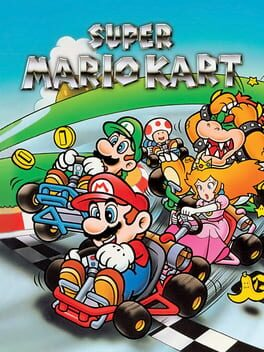
▲
1
▼
On May 20, 1996, Super Mario Kart was the first game re-released under Nintendo's "Player's Choice" series in the United States. The Player's Choice line was reserved for best-selling games, with new lower prices (in this case, a suggested retail price of $34.95).
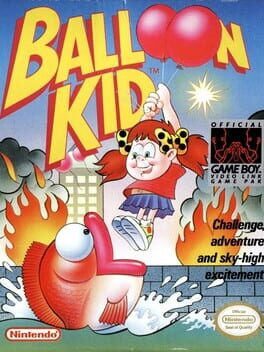
subdirectory_arrow_right Hello Kitty World (Game)
▲
2
▼
Hello Kitty World is a Japan-exclusive reskin and remake of the Game Boy game Balloon Kid that was developed for the Famicom in 1992. The game was co-published by Character Soft and Mario Co., a short-lived joint venture between Nintendo and the Japanese advertising agency Dentsu, and developed by Pax Softnica, the co-developers of the original game. Although the plot is different and some visual elements are changed, the game's mechanics, music and levels vary from being similar to nearly identical to Balloon Kid. The original game would go unreleased in Japan until the upgraded Game Boy Color port Balloon Fight GB was released in 2000.
Overview video:
https://www.youtube.com/watch?v=ivDct6QTuuU
Gameplay comparison:
https://www.youtube.com/watch?v=O71ATAkZOKg
Mario Co. Ltd. formation announcement in 1991:
https://web.archive.org/web/20111008054039/http://www.cbronline.com/news/nintendo_dentsu_joint_venture
https://www.youtube.com/watch?v=ivDct6QTuuU
Gameplay comparison:
https://www.youtube.com/watch?v=O71ATAkZOKg
Mario Co. Ltd. formation announcement in 1991:
https://web.archive.org/web/20111008054039/http://www.cbronline.com/news/nintendo_dentsu_joint_venture
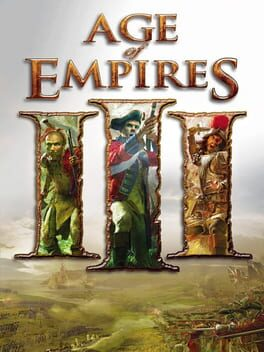
▲
1
▼
In a 2011 interview, Ensemble Studios founder Bruce Shelley commented that Age of Empires III had such a large number of changes that "it just wasn't an Age game anymore." Furthermore, when the team tried to change the title to distance the game from the series, Microsoft wouldn't allow it.
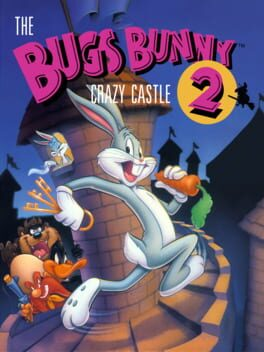
▲
1
▼
 Keeping in line with the Crazy Castle series' overseas licensing issues, the second game in the series, released on the Game Boy, would receive no less than five distinct versions overhauled with different licensed properties. It was first released as Mickey Mouse II in Japan, then released as The Bugs Bunny Crazy Castle 2 in North America, and was then brought over to Europe with the Mickey Mouse license again, but only had the number in the title truncated. It was later re-released in Europe as an updated version themed around the Danish media franchise Hugo, adding Super Game Boy support and a slightly remixed soundtrack. The game's final release in Japan as part of the Bugs Bunny Collection would revert to The Bugs Bunny Crazy Castle 2 version while including the Super Game Boy support, borders and palettes from the Hugo release.
Keeping in line with the Crazy Castle series' overseas licensing issues, the second game in the series, released on the Game Boy, would receive no less than five distinct versions overhauled with different licensed properties. It was first released as Mickey Mouse II in Japan, then released as The Bugs Bunny Crazy Castle 2 in North America, and was then brought over to Europe with the Mickey Mouse license again, but only had the number in the title truncated. It was later re-released in Europe as an updated version themed around the Danish media franchise Hugo, adding Super Game Boy support and a slightly remixed soundtrack. The game's final release in Japan as part of the Bugs Bunny Collection would revert to The Bugs Bunny Crazy Castle 2 version while including the Super Game Boy support, borders and palettes from the Hugo release.
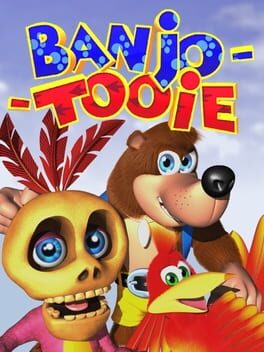
▲
1
▼
According to a "Rare Revealed" video released to coincide with Rare Replay, the boss character Lord Woo Fak Fak was named in reference to Rare engineer Paul Machacek, who would often swear whenever he found glitches in the code. When these issues were fixed, he would shout "Woo!", thus inspiring the boss' name.
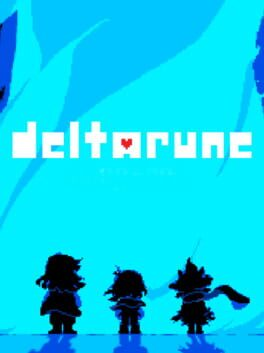
▲
1
▼
In the original release of Chapter 4, Susie's response to Catty drinking a bowl of milk in Hometown's alleyway read "(That's MY free milk, you furry degenerate...)". In the Version 1.01B update, this line was slightly rewritten to instead have Susie call Catty a "furry freak." No explanation was given for this change in the official changelog, which does not mention it whatsoever.
The Cutting Room Floor article:
https://tcrf.net/Deltarune/Chapter_4#Version_1.01B
Official changelog:
https://bsky.app/profile/undertale.com/post/3lr35dqmtlk2a
https://tcrf.net/Deltarune/Chapter_4#Version_1.01B
Official changelog:
https://bsky.app/profile/undertale.com/post/3lr35dqmtlk2a
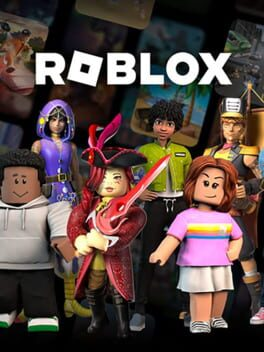
This trivia has been marked as "Not Safe for Work".
It may not be appropriate for all visitors and definitely isn't appropriate for work or school environments.
Click here to unhide it.
It may not be appropriate for all visitors and definitely isn't appropriate for work or school environments.
Click here to unhide it.
▲
1
▼
Roblox online dating support history with TikTok interactions:
https://www.youtube.com/watch?v=WdSMhPmmlTQ
Roblox community standards:
https://en.help.roblox.com/hc/en-us/articles/203313410-Roblox-Community-Standards
The Verge article with "age up" quote:
https://www.theverge.com/2022/9/9/23343459/roblox-age-guidelines-metaverse-ads-developer-conference-announcements
David Baszucki on safety:
https://www.bbc.co.uk/news/articles/c5yrjkl7dd6o
https://corp.roblox.com/newsroom/2023/05/our-vision-for-all-ages
Sub-game developer wanted by the FBI:
https://www.bloomberg.com/features/2024-roblox-pedophile-problem/
Miscellaneous Roblox child predation and pedophilia convictions and allegations between 2017 and 2025, more not listed here for brevity but can be found by searching for news articles online:
https://www.snopes.com/fact-check/roblox/
https://www.mirror.co.uk/news/uk-news/mothers-horror-after-sick-perverts-9697374.amp
https://www.news.com.au/lifestyle/parenting/kids/dad-warns-again-popular-online-kids-game/news-story/d02800df7d569ce78027479a9c56f328?amp
https://www.nbcnewyork.com/news/local/video-game-warning-roblox-child-sex-predator-online-site-investigation-what-to-know/87438/
https://wsvn.com/news/us-world/men-arrested-in-child-luring-sting-targeted-kids-through-games-like-fortnite/
https://www.latimes.com/california/story/2024-08-22/chilean-arrest-roblox-child-exploitation
https://www.nbcnews.com/news/rcna201795
https://www.nbcnews.com/amp-news/video/mmvo238217797715
https://nypost.com/2025/06/11/us-news/nj-teacher-allegedly-sexually-assaulted-boy-he-met-playing-roblox/
https://www.youtube.com/watch?v=WdSMhPmmlTQ
Roblox community standards:
https://en.help.roblox.com/hc/en-us/articles/203313410-Roblox-Community-Standards
The Verge article with "age up" quote:
https://www.theverge.com/2022/9/9/23343459/roblox-age-guidelines-metaverse-ads-developer-conference-announcements
David Baszucki on safety:
https://www.bbc.co.uk/news/articles/c5yrjkl7dd6o
https://corp.roblox.com/newsroom/2023/05/our-vision-for-all-ages
Sub-game developer wanted by the FBI:
https://www.bloomberg.com/features/2024-roblox-pedophile-problem/
Miscellaneous Roblox child predation and pedophilia convictions and allegations between 2017 and 2025, more not listed here for brevity but can be found by searching for news articles online:
https://www.snopes.com/fact-check/roblox/
https://www.mirror.co.uk/news/uk-news/mothers-horror-after-sick-perverts-9697374.amp
https://www.news.com.au/lifestyle/parenting/kids/dad-warns-again-popular-online-kids-game/news-story/d02800df7d569ce78027479a9c56f328?amp
https://www.nbcnewyork.com/news/local/video-game-warning-roblox-child-sex-predator-online-site-investigation-what-to-know/87438/
https://wsvn.com/news/us-world/men-arrested-in-child-luring-sting-targeted-kids-through-games-like-fortnite/
https://www.latimes.com/california/story/2024-08-22/chilean-arrest-roblox-child-exploitation
https://www.nbcnews.com/news/rcna201795
https://www.nbcnews.com/amp-news/video/mmvo238217797715
https://nypost.com/2025/06/11/us-news/nj-teacher-allegedly-sexually-assaulted-boy-he-met-playing-roblox/
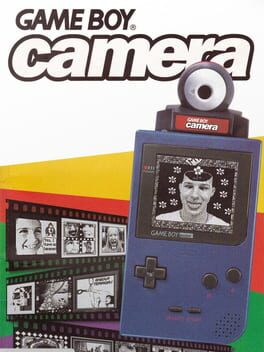
subdirectory_arrow_right Balloon Kid (Game)
▲
2
▼
The theme from Balloon Kid that plays when the final boss is defeated was later reused in the Game Boy Camera as additional background music. The composer of Balloon Kid's soundtrack, Hirokazu Tanaka, was also one of the composers for the Game Boy Camera's soundtrack.
Balloon Kid music:
https://www.youtube.com/watch?v=wlU0-8ZvMf0
Game Boy Camera music (5:38):
https://www.youtube.com/watch?v=PB60hUYnNSk#t=339s
Balloon Kid credits:
https://www.youtube.com/watch?v=r401AaeOv2I
Game Boy Camera credits:
https://www.youtube.com/watch?v=UuTyXG28YaY
https://www.youtube.com/watch?v=wlU0-8ZvMf0
Game Boy Camera music (5:38):
https://www.youtube.com/watch?v=PB60hUYnNSk#t=339s
Balloon Kid credits:
https://www.youtube.com/watch?v=r401AaeOv2I
Game Boy Camera credits:
https://www.youtube.com/watch?v=UuTyXG28YaY
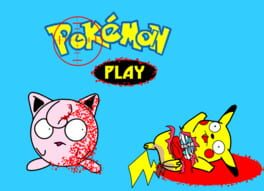
This trivia has been marked as "Not Safe for Work".
It may not be appropriate for all visitors and definitely isn't appropriate for work or school environments.
Click here to unhide it.
It may not be appropriate for all visitors and definitely isn't appropriate for work or school environments.
Click here to unhide it.
▲
2
▼
Pokemon Must Be Destroyed 2002 archive with links to the shooting gallery game and the then-official Mortal Kombat website:
https://web.archive.org/web/20020206044404/http://mustbedestroyed.com/index_newpokemon.php3
Earliest archive of the Pokémon Must Be Destroyed page from 2000:
https://web.archive.org/web/20000129095634/http://www.mustbedestroyed.com/
Must Be Destroyed hub site from 2000:
https://web.archive.org/web/20000606213217/http://www.mustbedestroyed.com/
Celebrity "excecutioners" as of 2002, also has a Threshold home page button unlike earlier archives:
https://web.archive.org/web/20021203085049/http://www.mustbedestroyed.com/archive/poke_index.php3
Threshold Entertainment sizzle reel:
https://www.thresholdentertainment.com/copy-of-bobbleheads-the-movie
Press release about the webseries to a major animation news website:
https://www.awn.com/news/threshold-must-destroy-pokemon
Various news reports:
https://nypost.com/1999/11/24/its-poke-cidal-mania-web-site-lets-folks-kill-kiddie-creatures/
https://www.zdnet.com/article/death-to-pokemon/
Rotten: Behind the Foodfight! documentary, relevant info between 0:58 and 1:30, shows a snapshot of the wider Threshold site with a link to the Pokemon subsite:
https://www.youtube.com/watch?v=xgBO9c3WKII
https://web.archive.org/web/20020206044404/http://mustbedestroyed.com/index_newpokemon.php3
Earliest archive of the Pokémon Must Be Destroyed page from 2000:
https://web.archive.org/web/20000129095634/http://www.mustbedestroyed.com/
Must Be Destroyed hub site from 2000:
https://web.archive.org/web/20000606213217/http://www.mustbedestroyed.com/
Celebrity "excecutioners" as of 2002, also has a Threshold home page button unlike earlier archives:
https://web.archive.org/web/20021203085049/http://www.mustbedestroyed.com/archive/poke_index.php3
Threshold Entertainment sizzle reel:
https://www.thresholdentertainment.com/copy-of-bobbleheads-the-movie
Press release about the webseries to a major animation news website:
https://www.awn.com/news/threshold-must-destroy-pokemon
Various news reports:
https://nypost.com/1999/11/24/its-poke-cidal-mania-web-site-lets-folks-kill-kiddie-creatures/
https://www.zdnet.com/article/death-to-pokemon/
Rotten: Behind the Foodfight! documentary, relevant info between 0:58 and 1:30, shows a snapshot of the wider Threshold site with a link to the Pokemon subsite:
https://www.youtube.com/watch?v=xgBO9c3WKII
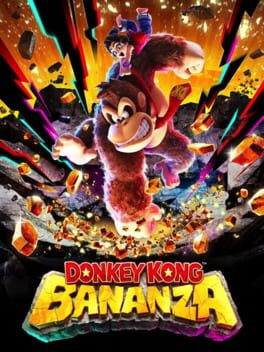
▲
1
▼
When deciding what characters would appear in the game, Nintendo EPD took inspiration from the original Donkey Kong arcade game, which established that Donkey Kong lived alongside humans. While the team debated how much human-related content and Donkey Kong Country-inspired elements would be included, producer Kenta Motokura mandated that the character Cranky Kong should appear because he was a fan of the character.
It was decided early on that another character would accompany Donkey Kong throughout the game, though no specific character had been included in the software design description. One developer suggested Pauline, with this idea being revisited following the implementation of Donkey Kong's "Zebra Bananza" form. The composer had written music for the transformation sequence, and the team decided to turn it into a song that Pauline could perform, having been established as a singer in Super Mario Odyssey. Both Motokura and director Kazuya Takahashi credited Pauline's inclusion with helping many of their ideas take form.
It was decided early on that another character would accompany Donkey Kong throughout the game, though no specific character had been included in the software design description. One developer suggested Pauline, with this idea being revisited following the implementation of Donkey Kong's "Zebra Bananza" form. The composer had written music for the transformation sequence, and the team decided to turn it into a song that Pauline could perform, having been established as a singer in Super Mario Odyssey. Both Motokura and director Kazuya Takahashi credited Pauline's inclusion with helping many of their ideas take form.
Rolling Stone article:
https://www.rollingstone.com/culture/rs-gaming/donkey-kong-bananza-devs-explain-pauline-1235380842/
The Verge article:
https://www.theverge.com/nintendo/703468/donkey-kong-bananza-developer-interview-switch-2
IGN article:
https://www.ign.com/articles/our-big-bananas-interview-with-the-developers-of-donkey-kong-bananza
https://www.rollingstone.com/culture/rs-gaming/donkey-kong-bananza-devs-explain-pauline-1235380842/
The Verge article:
https://www.theverge.com/nintendo/703468/donkey-kong-bananza-developer-interview-switch-2
IGN article:
https://www.ign.com/articles/our-big-bananas-interview-with-the-developers-of-donkey-kong-bananza
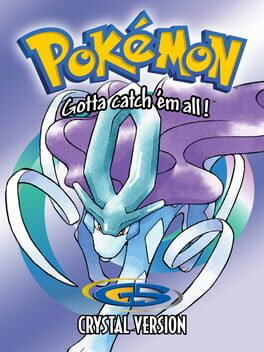
subdirectory_arrow_right Pokémon Blue Version (Game), Pokémon Red Version (Game), Pokémon FireRed Version (Game), Pokémon Yellow Version: Special Pikachu Edition (Game), Pokémon SoulSilver Version (Game), Pokémon HeartGold Version (Game), Pokémon Gold Version (Game), Pokémon LeafGreen Version (Game), Pokémon Silver Version (Game)
▲
2
▼
A recurring oddity in the Pokémon games is that the Gym Leader and later Elite Four member Koga, the Kanto Region's Poison-type expert, threatens to defeat his opponents with both Poison and Sleep tactics. In Red and Blue, he states:
In Gold, Silver, Crystal, and their remakes HeartGold and SoulSilver, he states:
In FireRed and LeafGreen, he states:
Despite this, the only game in the series where Koga's main team uses any Sleep-inducing moves is Yellow, where two of his Venonats have Sleep Powder. In contrast, all of Koga's teams have incorporated Poisoning moves, with some of his teams being entirely composed of Pokémon using such moves. Although possibly a mistake, this might also tie into the theme of misdirection, which would be fitting for the ninja-themed Fuchsia Gym.
"You shall feel the despair of poison and sleep techniques!"
In Gold, Silver, Crystal, and their remakes HeartGold and SoulSilver, he states:
"Confusion, sleep, poison... Prepare to be the victim of my sinister technique!"
In FireRed and LeafGreen, he states:
"Poison brings steady doom. Sleep renders foes helpless."
Despite this, the only game in the series where Koga's main team uses any Sleep-inducing moves is Yellow, where two of his Venonats have Sleep Powder. In contrast, all of Koga's teams have incorporated Poisoning moves, with some of his teams being entirely composed of Pokémon using such moves. Although possibly a mistake, this might also tie into the theme of misdirection, which would be fitting for the ninja-themed Fuchsia Gym.
Evolution of Fuchsia Gym Leaders:
https://www.youtube.com/watch?v=ih3lpHU73NA
Pokémon Yellow - Venonat Sleep Powder:
https://www.youtube.com/watch?v=t0AVV5nZYFg
Pokémon Crystal - Koga's Elite Four appearance:
https://www.youtube.com/watch?v=Lq9pvmGEp6U
Koga's teams on Bulbapedia:
https://bulbapedia.bulbagarden.net/wiki/Koga
https://www.youtube.com/watch?v=ih3lpHU73NA
Pokémon Yellow - Venonat Sleep Powder:
https://www.youtube.com/watch?v=t0AVV5nZYFg
Pokémon Crystal - Koga's Elite Four appearance:
https://www.youtube.com/watch?v=Lq9pvmGEp6U
Koga's teams on Bulbapedia:
https://bulbapedia.bulbagarden.net/wiki/Koga
Platform: Wii
▲
4
▼
Among the material uncovered in the 2020 Gigaleak, a large-scale breach of internal server data from Nintendo, are a pair of emails describing a proposed "21st Century Version of Famicom" as a "fourth pillar" for the Wii Virtual Console alongside NES, SNES, and N64 emulation. According to these correspondences, the idea was the brainchild of Wii lead developer Genyo Takeda and would've consisted of emulated NES games with improved graphics. The concept progressed towards an early testing phase, but was ultimately scrapped to focus more on developing the Virtual Console's SNES emulator.
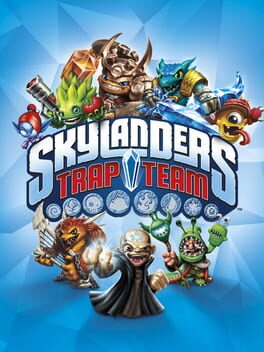
▲
1
▼
 According to an animation reel from Neil Wrischnik, the Blocker Birds seen in The Phoenix Psanctuary were originally going to be enemies rather than NPCs, complete with unused animations and an unused trapping sequence suggesting that one of them was intended to appear as a playable villain character.
According to an animation reel from Neil Wrischnik, the Blocker Birds seen in The Phoenix Psanctuary were originally going to be enemies rather than NPCs, complete with unused animations and an unused trapping sequence suggesting that one of them was intended to appear as a playable villain character.
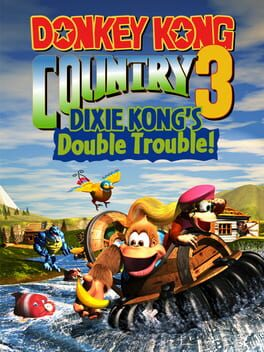
subdirectory_arrow_right Donkey Kong Country 3 (Game), Donkey Kong Country 2 (Game), Donkey Kong Country 2: Diddy's Kong Quest (Game), Donkey Kong Country (Game), Donkey Kong Country (Game)
▲
1
▼
The "starburst effect" that occurs when bouncing on enemies is usually meant to expand, but in the first two Donkey Kong Country games, they were mistakenly coded to contract instead. This issue was fixed in the third game and the subsequent re-releases of all three games on the Game Boy Advance.
Visual comparison images:
https://bsky.app/profile/mariobrothblog.bsky.social/post/3lsyuqkowgc2g
https://bsky.app/profile/mariobrothblog.bsky.social/post/3lsyvqfebns2u
DKC SNES:
https://www.youtube.com/watch?v=bXHDSA35_2k#t=40s
DKC GBA:
https://www.youtube.com/watch?v=oThzu4wVDbc#t=156s
DKC 2 SNES:
https://www.youtube.com/watch?v=AKKn1oxbLlU#t=50s
DKC 2 GBA:
https://www.youtube.com/watch?v=yjtgqz8EO0U#t=335s
DKC 3 SNES:
https://www.youtube.com/watch?v=dT3-qdoVihY#t=265s
DKC 3 GBA:
https://www.youtube.com/watch?v=K949DkLQOWU#t=210s
https://bsky.app/profile/mariobrothblog.bsky.social/post/3lsyuqkowgc2g
https://bsky.app/profile/mariobrothblog.bsky.social/post/3lsyvqfebns2u
DKC SNES:
https://www.youtube.com/watch?v=bXHDSA35_2k#t=40s
DKC GBA:
https://www.youtube.com/watch?v=oThzu4wVDbc#t=156s
DKC 2 SNES:
https://www.youtube.com/watch?v=AKKn1oxbLlU#t=50s
DKC 2 GBA:
https://www.youtube.com/watch?v=yjtgqz8EO0U#t=335s
DKC 3 SNES:
https://www.youtube.com/watch?v=dT3-qdoVihY#t=265s
DKC 3 GBA:
https://www.youtube.com/watch?v=K949DkLQOWU#t=210s
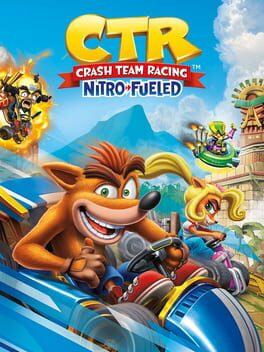
▲
2
▼
The developers of Crash Team Racing Nitro-Fueled were informed ahead of time that the game's post-launch support would be limited. Very little content was thought of, and none was worked on, for grands prix that didn't make it to release. Creative director Thomas Wilson stated the only scrapped grand prix concept he recalls is "Heroes vs. Villains", a superhero parody grand prix compared to the animated film Megamind, which would have featured a course in a "retro-futuristic" city and superhero and supervillain outfits for the racers.
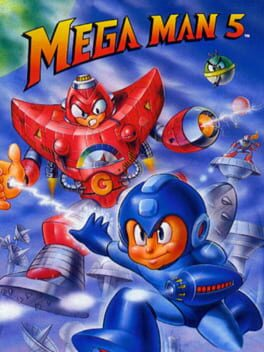
▲
6
▼
Contrary to popular belief, there is no evidence that Mega Man 5 was banned or failed to release in Vietnam specifically because of Napalm Man's design, the similarities that his stage's design bears to areas within the country (including the Viet Cong's tunnel system used during the Vietnam War), or one of its enemies resembling a tiger species endemic to Vietnam among other similarities. The history of the Vietnamese video game market itself is poorly documented. It is currently believed that all video game imports were virtually banned by the Vietnamese government as a result of Cold War tensions until the implementation of the Đổi Mới reforms started in 1986, which allowed for some second-hand game console imports and rental arcades to pop up. They are thought to have become a more widely available commodity in the country in 1994, two years after Mega Man 5's release, when the United States lifted its 30-year-long trade embargo on Vietnam. There is no known documented information available on if there even was a Vietnamese reaction to Napalm Man at the time.
Unlisted video perpetuating this rumor and showcasing Napalm Man character and stage similarities:
https://www.youtube.com/watch?v=hcIzcMxRzFg
Phan Quang Anh - "Entertainment in a changing world: Vietnam and video gaming" (pages 108-110 in the research paper):
https://doi.org/10.5167%2Fuzh-184607
Barcode Magazine article (article is in Vietnamese):
https://web.archive.org/web/20180909113928/http://www.barcodemagazine.vn/lifestyle/trends/dien-tu-4-nut-cu-hit-choi-loa-cua-nhung-nam-1990/
https://www.youtube.com/watch?v=hcIzcMxRzFg
Phan Quang Anh - "Entertainment in a changing world: Vietnam and video gaming" (pages 108-110 in the research paper):
https://doi.org/10.5167%2Fuzh-184607
Barcode Magazine article (article is in Vietnamese):
https://web.archive.org/web/20180909113928/http://www.barcodemagazine.vn/lifestyle/trends/dien-tu-4-nut-cu-hit-choi-loa-cua-nhung-nam-1990/
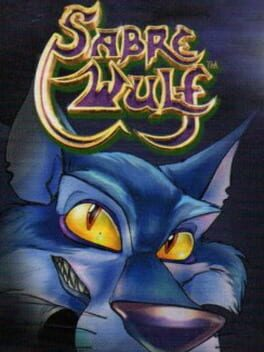
▲
1
▼
A short test map exists within the game that can only be accessed via an Action Replay cart. The map itself is a closed off room containing a series of platforms, Sabre Wulf, the treasure he guards, and a single power up. As the room itself has no exit, it is impossible to escape Sabre Wulf once Sabreman picks up the treasure.
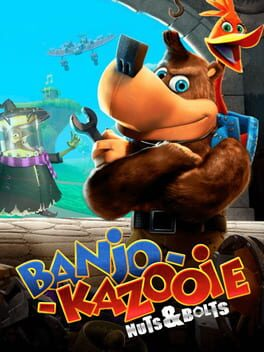
▲
2
▼
Originally, Boggy's three children (Groggy, Soggy and Moggy) were intended to appear in the game as part of a challenge called "Don't Bring Your Kids to Work Day", but the challenge was scrapped due to time constraints. In 2019, it was discovered that Soggy and Moggy not only had fully completed models in the game, but also AI that was reused from the Minjos in the game. They can appear in Banjoland Act 6 during the challenge "Home Improvements: Igloo Edition", where Soggy can be found running on top of Clanker, while Moggy can be found running on top of the display case, both far away from where the actual challenge takes place. It is currently unknown if Groggy is anywhere in the game.
Rare Scribes:
https://web.archive.org/web/20090219132033/http://rareware.com/extras/scribes/12feb09/index.html
Video showing off Soggy and Moggy:
https://www.youtube.com/watch?v=ih9KcJl-iwI
https://web.archive.org/web/20090219132033/http://rareware.com/extras/scribes/12feb09/index.html
Video showing off Soggy and Moggy:
https://www.youtube.com/watch?v=ih9KcJl-iwI
